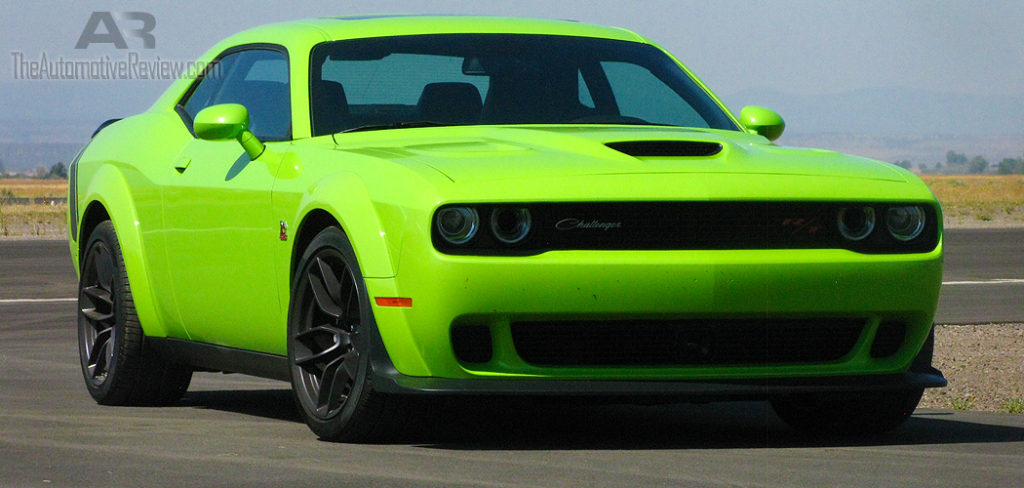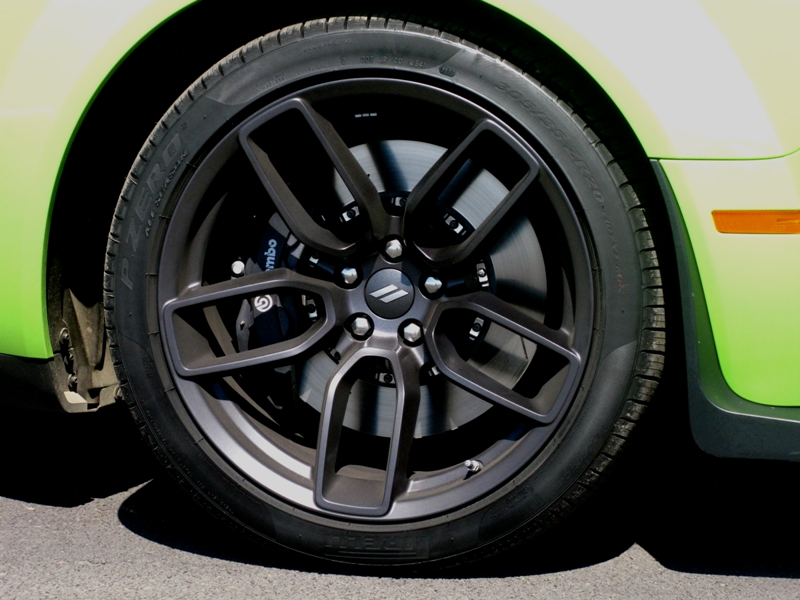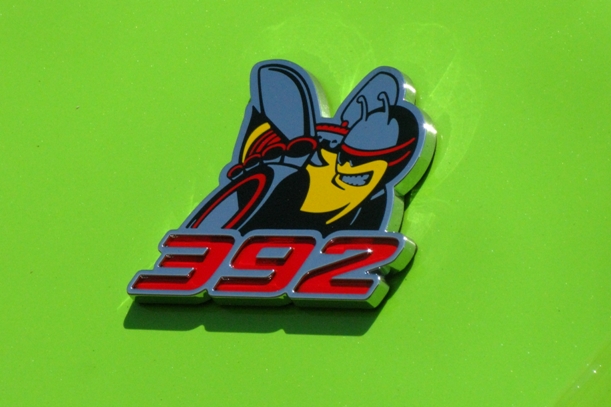When one thinks of Dodge Challengers, one likely thinks of the Hellcat version, with its supercharged Hemi V8 pumping out ungodly horsepower numbers that have led the muscle car segment for the last couple of years.

But, of course, there are non-supercharged Challengers, even mundane ones with V6 and all-wheel drive. But the one we are looking at here is the Scat Pack 392 Widebody, and if a model name ever needed explanation, this is the one.
‘Scat Pack’ goes back half a century to when the original Challengers were being heavily promoted, and the marketing team came up with this name to describe the Dodge performance cars. Today, it might connote something else to some people, but it is still a cute throwback to a simpler time. ‘392’ is the displacement of the V8 in cubic inches (6.4 litres for those who insist on metric), and it is also the displacement of the legendary first-generation Hemi from the 1950s that powered so many nitro-fueled drag cars in the early days.

‘Wide Body’ – well, that is fairly self-explanatory if you look at the photos. The Hellcat needed more rubber on the road to deal with all that horsepower, so Dodge did the time-honoured thing and put 3.5-inch fender flares on it, to legally and esthetically contain the new tires. It’s no surprise that they have now filtered down the line to the top-dog non-supercharged Challenger, because they add a whole ‘nother bad-ass attitude to the car.
What the Dodge engineers and product planners also realized early-on is that the big tires on a ‘high’-horsepower car (versus the Hellcat’s ‘insane’ horsepower) would lead to a car that performed well in the corners, too. One thing led to another, and the 392 WB has an entirely different suspension set-up, in terms of springs, shock absorbers and overall stiffness. The front springs are 14 percent stiffer than even those on the Hellcat, and the rears are the same as Hellcat’s, as are the anti-roll bars. And, most importantly, the shock absorbers are Bilstein three-mode (Auto, Sport, or Track) adjustable units, all tuned up for the bigger tires and lighter (than Hellcat) front-end weight of the 392 WB. Dodge calls it Adaptive Damping.

All of a sudden, there is a Challenger for those looking for high-speed cornering and somewhat nimble handling, as much as a 4,300-pound car can deliver. Make no mistake – the Challenger is a large two-door hardtop based on the Dodge Charger sedan, and doesn’t pretend to be a sports coupe like the performance versions of Mustang and Camaro. Having said that, the 392 WB gets into and through corners with a satisfying degree of alacrity, which we found out on the narrow, very twisty road we drove it on. It turns in smoothly assuming semi-sane speeds, and holds a nice tight line. Exit speed is all you might want, as the 305/35ZR20 Pirelli tires aren’t overpowered, as is very likely with the Hellcat. Indeed, in Dodge’s own testing, the 392 WB is quicker around a track than any Hellcat with the regular body and tires, this with at least 222 horsepower less. Shows you what tires and chassis tuning are worth.

Adding to the 392 WB’s qualifications as a track-day car are the upgraded brakes you get with the Widebody package – 15.4-inch Brembos with six piston calipers up front, 13.8-inchers with four pistons in back. Again, this is serious gear for those who want a Challenger that can handle corners all day long.

Under the hood of the Scat Pack 392 (in regular or Widebody trim) is the bigger of the two naturally-aspirated Hemi V8s, with this model being the only one you can get this engine in. It features an iron block with aluminum heads that have actual hemispheric combustion chambers and 10.9:1 compression ratio, and it pumps out 485 horsepower and 475 pounds-feet of torque on premium 91 octane. Other than the alloy heads, that all sounds like the actual specs for the original 426 Hemi of half-a-century ago, which was under-rated at 425 official horsepower. The Challenger so-equipped is capable of low-12-second quarter-miles, and 0-100 km/h in the four-second range, which would annihilate the old Hemi cars.

You have a choice of a six-speed manual or (optional) eight-speed TorqueFlite automatic (love that old name), and unlike the supercharged cars where we think the manual is a bit overmatched by the power, we’d say go with whichever you please on the 392. The one we drove had the automatic with paddle shifters, and it complemented the car’s performance attributes nicely. Of interest, the engine is equipped with VVT and Fuel Saver Technology (cylinder deactivation) only with the automatic, and on a car as thirsty as this, every little bit helps.
Inside, being a large car, the Challenger has lots of room, at least up front. The seats are wide with little side bolstering compared to the aforementioned rival sport coupes, making the Widebody the muscle car of choice for those who self-identify using the same term. Lateral and under-thigh support are good, although the construction of the seat could be described as a bit ‘soft.’ We say they are good seats for long trips, okay for track days. The Plus Group option package gets you very attractive upgraded seats with Nappa leather and Alcantara trim. There are also two optional levels of audio systems – Alpine and Harman-Kardon.

Getting into the back seat involves some contortion, but once in there, and if the front seats aren’t all the way back, it’s not bad for room for adults. Ditto for the trunk – small opening, but reasonable space.
The overall look of the interior is somewhat dated, with some hard plastics. This to be expected, as the Challenger platform dates back over a dozen years to the DaimlerChrysler days. That also accounts for the absence of some of the high-end electronic safety gear that most cars these days in this price range ($59,445 base) have. Optionally available in packages are Blind-spot Monitoring (much needed with this body style), Rear Cross-Path Detection, and Forward Collision Warning.

And yet, one has to think that the specific customer FCA is seeking (you have to figure some combination of older, male, business-type, already has a Ram pickup) won’t let that bother him.
The Challenger Scat Pack 392 Widebody is big, fast, loud, and in your face. It’s also comfortable, well-equipped if all the packages are chosen, and a legitimate long-distance GT car. You can drive it a few hours, run it around a track, and head home in it. Or just throw the golf clubs in the trunk and drive to the club. It’s actually quite a versatile car in that sense – all the visual appeal, the same usable performance, lower cost, and better economy than a Hellcat – plus the rational aspects of comfort and space. The guys who want the last word in handling and cornering will probably say that it is too big and heavy, but for everyone else, this Challenger is a nicely balanced modern muscle car.




